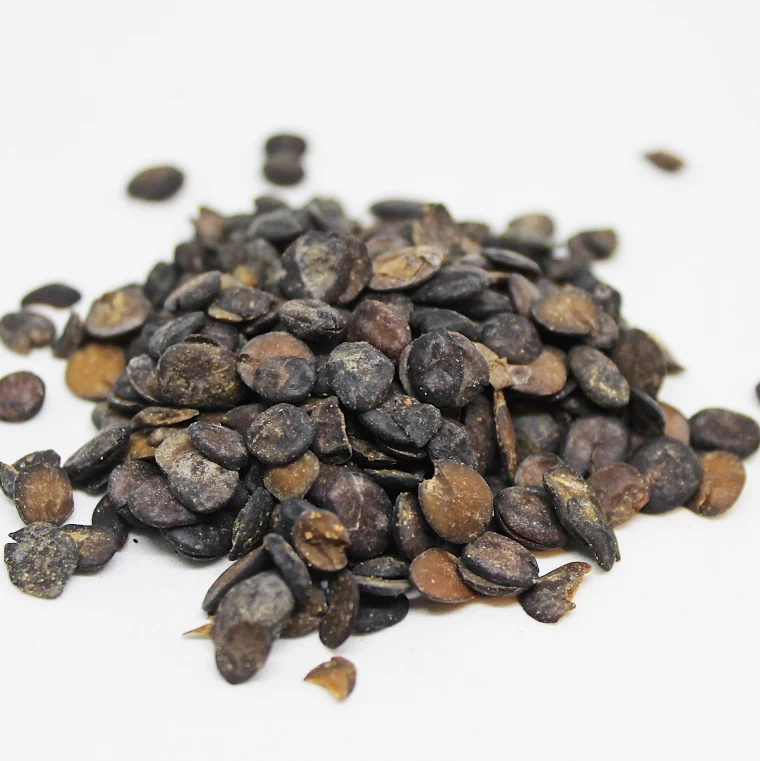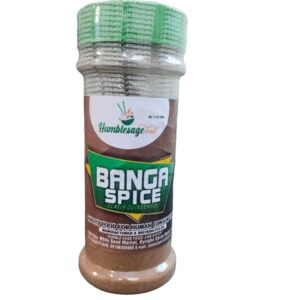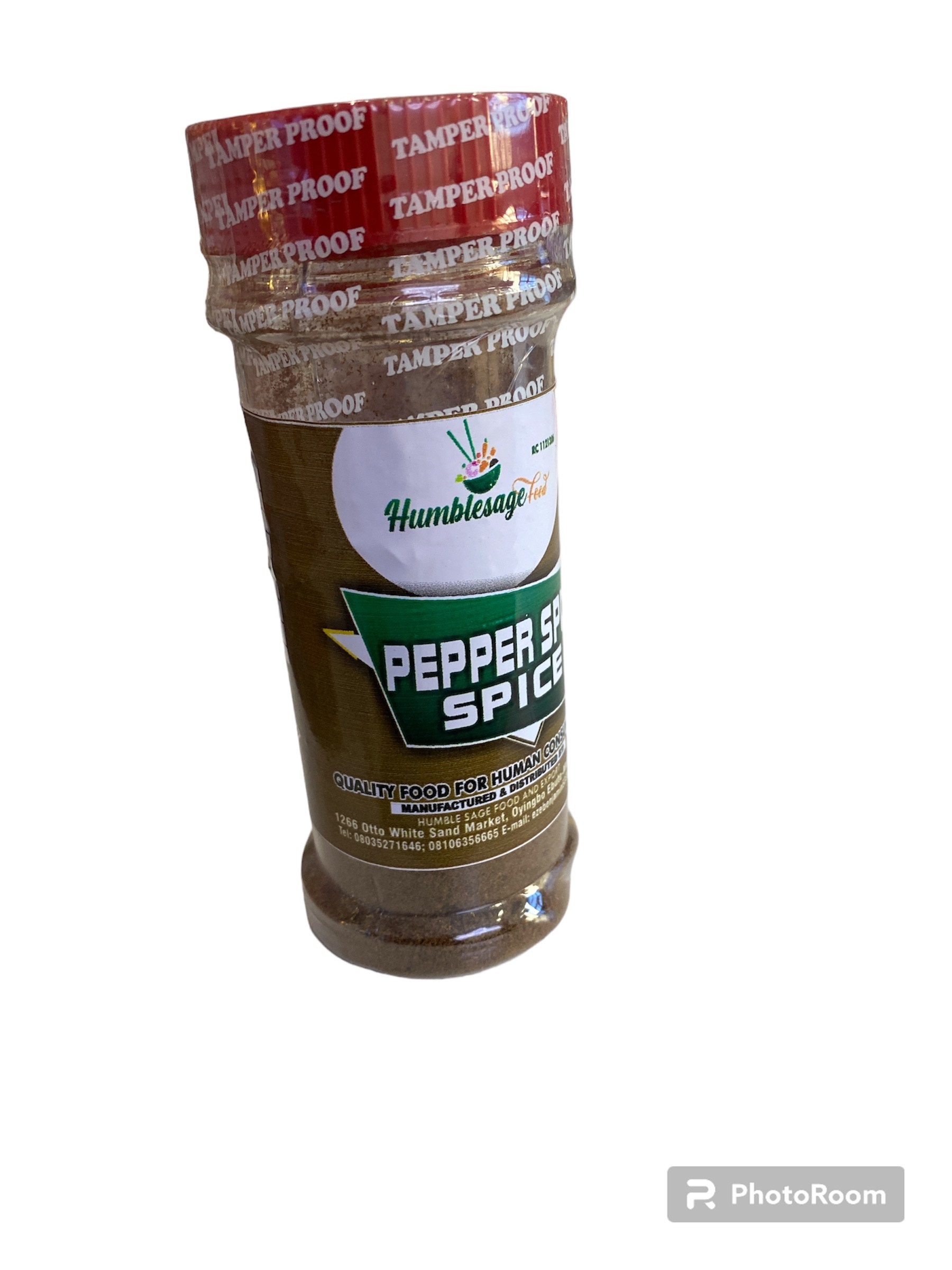

Pepper soup spice
₦3,000.00 – ₦30,000.00Price range: ₦3,000.00 through ₦30,000.00
Pepper soup spice is a traditional West African blend used in the iconic pepper soup, known for its spicy and aromatic flavor. Key ingredients include uziza seeds, ehuru, uda pods, alligator pepper, cloves, ginger, garlic, onions, and bay leaves. This spice mix enhances soups, stews, marinades, and seasonings, providing digestive, anti-inflammatory, and immune-boosting benefits. Store in an airtight container for lasting freshness.
Description
Pepper soup spice is a traditional blend of spices used in West African cuisine, particularly for making the famous pepper soup, a spicy and aromatic soup often prepared with fish, goat meat, or chicken. This spice mix is known for its distinctive, pungent flavor and is an integral part of the culinary traditions in Nigeria, Ghana, and other West African countries.
Composition of Pepper Soup Spice
Pepper soup spice typically includes a variety of spices, each contributing to its unique flavor profile:
- Uziza Seeds (Piper guineense): Known for their pungent and slightly bitter flavor.
- Ehuru (Calabash Nutmeg or Monodora myristica): Adds a sweet, nutty, and slightly spicy flavor.
- Uda Pods (Negro Pepper or Xylopia aethiopica): Provide a peppery and slightly smoky taste.
- Alligator Pepper (Aframomum melegueta): Similar to grains of paradise, it adds heat and a peppery flavor.
- Cloves (Syzygium aromaticum): Offer a warm, sweet, and slightly astringent flavor.
- Ginger (Zingiber officinale): Adds a fresh, spicy, and slightly sweet taste.
- Garlic (Allium sativum): Contributes a robust and slightly pungent flavor.
- Onions (Allium cepa): Adds sweetness and depth to the spice mix.
- Bay Leaves (Laurus nobilis): Impart a subtle, savory, and slightly floral aroma.
Physical Characteristics
- Color: The ground spice blend is usually a light to dark brown powder.
- Texture: Fine to coarse powder, depending on how it is ground.
- Aroma: Rich, complex, and aromatic with a combination of sweet, spicy, and savory notes.
- Flavor: A well-balanced mix of spicy, pungent, earthy, and slightly sweet flavors.
Nutritional Profile (per 100 grams)
While the exact nutritional content can vary based on the specific blend of spices used, pepper soup spice generally provides the following:
- Calories: Approximately 300-350 kcal
- Carbohydrates: Around 40-50 grams
- Protein: About 10-15 grams
- Fat: Roughly 10-15 grams, predominantly healthy fats
- Fiber: Approximately 20-30 grams
- Vitamins and Minerals: Rich in vitamins A, C, and E, as well as calcium, magnesium, potassium, and iron.
Health Benefits
- Digestive Health: Many of the spices aid digestion and help alleviate gastrointestinal issues.
- Anti-inflammatory: Contains anti-inflammatory properties that help reduce inflammation.
- Antimicrobial: Some spices have antimicrobial properties that can help fight infections.
- Antioxidant Properties: Rich in antioxidants, which help protect the body from oxidative stress.
- Immune Boosting: Ingredients like ginger and garlic are known for their immune-boosting properties.
Culinary Uses
- Pepper Soup: The primary use is in making pepper soup, a traditional West African dish. The spice mix is added to the broth to infuse it with its characteristic flavor.
- Marinades: Used in marinades for meat and fish to enhance flavor.
- Stews and Sauces: Can be added to various stews and sauces for a spicy kick.
- Seasoning: Sprinkled on grilled or roasted meats and vegetables.
Traditional Recipes
- Pepper Soup: Made with a variety of proteins, such as fish, goat meat, chicken, or beef, simmered with pepper soup spice, onions, garlic, ginger, and fresh herbs.
- Pepper Soup with Yam or Plantain: Variations include adding yam or plantain to the soup for additional texture and flavor.
Preparation of Pepper Soup Spice
- Sourcing Ingredients: Collect all the required spices and seasonings.
- Drying: Ensure all ingredients are properly dried to prevent moisture content.
- Roasting (Optional): Some recipes call for lightly roasting the spices to enhance their flavors.
- Grinding: Grind the dried spices into a fine or coarse powder, depending on preference.
- Blending: Mix the ground spices thoroughly to create a uniform blend.
- Storage: Store the spice blend in an airtight container to maintain freshness and potency.
Storage
- Conditions: Store in a cool, dry place away from direct sunlight.
- Shelf Life: Can last for several months if stored properly in an airtight container.
Cultural and Historical Significance
- Culinary Tradition: An essential component of West African culinary tradition, especially in Nigerian cuisine.
- Cultural Celebrations: Often used in preparing special dishes for festivals, celebrations, and traditional ceremonies.
Safety and Precautions
- Allergies: Individuals with specific spice allergies should check the ingredients carefully.
- Storage: Proper storage is crucial to prevent the spices from losing their flavor and potency.
Additional information
| Weight | N/A |
|---|---|
| Package Size | 100g, 500g, 1kg |
Related products
-
Sale!

Dried Ginger
₦26,000.00Original price was: ₦26,000.00.₦25,000.00Current price is: ₦25,000.00. Select options This product has multiple variants. The options may be chosen on the product page -
Sale!

locust beans
₦13,500.00Original price was: ₦13,500.00.₦12,500.00Current price is: ₦12,500.00. Select options This product has multiple variants. The options may be chosen on the product page -
Sale!

Tumeric powder
₦6,000.00Original price was: ₦6,000.00.₦5,000.00Current price is: ₦5,000.00. Select options This product has multiple variants. The options may be chosen on the product page -
Sale!

Banga spice
₦5,000.00 – ₦25,000.00Price range: ₦5,000.00 through ₦25,000.00 Select options This product has multiple variants. The options may be chosen on the product page

